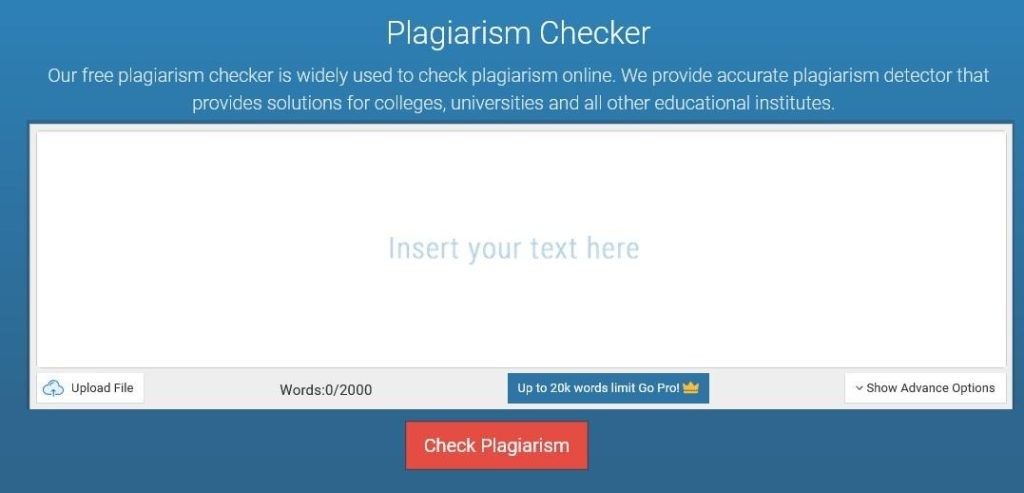Plagiarism is a major issue in content writing. So, what are the best practices to avoid it?
Plagiarism is a cause of headaches for many people around the globe. It’s in academia, professional writing, and the online world all the same. Here are two stats that tell us this fact:

- Around 43% of students admit that they plagiarized when writing a test/assignment;
- Around 29% or 1.5 billion web pages have plagiarized content in them.
So, content writers need to deal with it on their end to avoid the consequences of plagiarism. But how exactly should they do that? Let’s find out.
Defining Plagiarism
Plagiarism is the act of presenting someone else’s work as one’s own. It is a form of cheating, and it is punishable by law. The act of plagiarism can be intentional or unintentional.
When plagiarism becomes intentional, it usually involves an attempt to deceive the reader by either passing off another person’s work as your own or falsely attributing the authorship to oneself. There are many ways in which people can plagiarize content, but it largely falls under three categories:
- Paraphrasing
- Copy and pasting
- Rewriting/ paraphrasing and then copying/pasting
Thus, it’s important to do these three steps responsibly—something we’ll explore in this article.
7 Best Ways To Avoid Plagiarism In Content Writing
The best kind of way to avoid plagiarism allows you to skip it properly. This includes getting help through a plagiarism checker and ensuring the originality of your text. It also involves using the right methods, such as paraphrasing responsibly.
This means you’re not only writing with the intent to avoid plagiarism, but you’re taking the necessary steps after you lift the pen from your paper. So, let’s explore the 7 methods you can use to avoid plagiarism in content writing.
- Researching More
The first thing you’re going to do is research more and write less. Now, this doesn’t mean that instead of your requirement of 1000-words, you’d write 500 words.
No, what it means is that you’d research for 2 hours and write for one. It may not seem practical, but if you’re not aware of the topic you’re writing about, then your content is more prone to plagiarism.
That’s why researching and understanding the topic you’re going to write about is a necessary and essential requirement of content writing. So, research more and write accordingly to avoid plagiarism at all costs.
- Taking Notes
Note-taking is one of the essential processes of writing good-quality content. However, it’s more important to avoid plagiarism as it helps you remember which source you’re using in your text. Many a time, writers tend to forget that they’ve taken content from other sources.
As a result of this neglect, their content ends up being plagiarized, and they face dire consequences for it. Now, the effects of plagiarism are a topic for another time. But taking notes is a lot better than finding out your content is duplicated when using a plagiarism checker. So, take notes thoroughly.
- Remembering The Sources
Sources that you use in your content can help prevent plagiarism efficiently. As mentioned before, the intent of avoiding plagiarism is a lot better than finding out later that your content has plagiarized text in it. So, as a content writer, it’s your responsibility to remember the sources. How do you do that?
- Take notes of your text;
- Backlink the sources;
- Remember the quotes of the original author.
These are only vague suggestions because a tactic like this is something a writer needs to develop on their own.
- Scanning For Plagiarism Before Submission
Scanning for plagiarism before submitting the content is one of the most efficient ways of avoiding plagiarism. Remember, content writing is all about ensuring originality. And finding plagiarism before submitting is a lot better than facing its consequences.
Here’s what you should do:
- Find and use a plagiarism checker:

- Check the percentage of unique and plagiarized text;
- Note down the source (important to find a plagiarism checker that does it);
- Compare the text directly against the original.
This process allows you to steer away from plagiarism quite efficiently. It also helps you improve the chances of paraphrasing, which helps you skip past plagiarism. So, use a plagiarism checker and
- Using Citation Styles
Citation of the sources is one of the key methods to avoid plagiarism. Many times, writers end up plagiarizing simply because they do not have the slightest idea of using the right citation styles. Here are three main citation styles you can use:
- APA
- MLA
- Chicago
Now, these three citation styles aren’t only important because they help you stand out and are key to avoiding plagiarism. The one thing to understand here is that citation gives the original author their due credit.
That’s exactly what avoids one of the major causes of plagiarism. So, if you’re unaware of the art of citation, research and learn more about it.
- Paraphrasing Responsibly
Consider the paraphrasing guide while writing is one of the keys to steering past plagiarism.. It’s been mentioned throughout this article that you need to intend on avoiding plagiarism. Thus, the importance stems from your necessity to write original content.
And one of the best ways to do that is by paraphrasing responsibly. How do you do that? By ensuring that you paraphrase thoroughly. And by the time you rephrase, only the original author’s idea should remain—except for the keywords and terms.
- Quote The Original Source Directly
Quoting the source directly is yet another plausible way of avoiding plagiarism. Once again, this process also ensures that the original author is getting their due credit. So, quoting directly is also very efficient in avoiding plagiarism.
Not; this depends on the type of content you’re writing and the niche. But, quoting is acceptable in almost all types of content writing, niches, or industries. As long as you reference the original author alongside it, you shall face no problem with plagiarism in the future.
Conclusion
These are some of the most viable ways of avoiding plagiarism. Granted, you need to ensure that you write for original and unique content from the beginning. But, using a plagiarism checker or quoting and citing the original author after you write it holds the same effect. So, follow these seven methods to avoid plagiarism in your writing.




Recent Comments